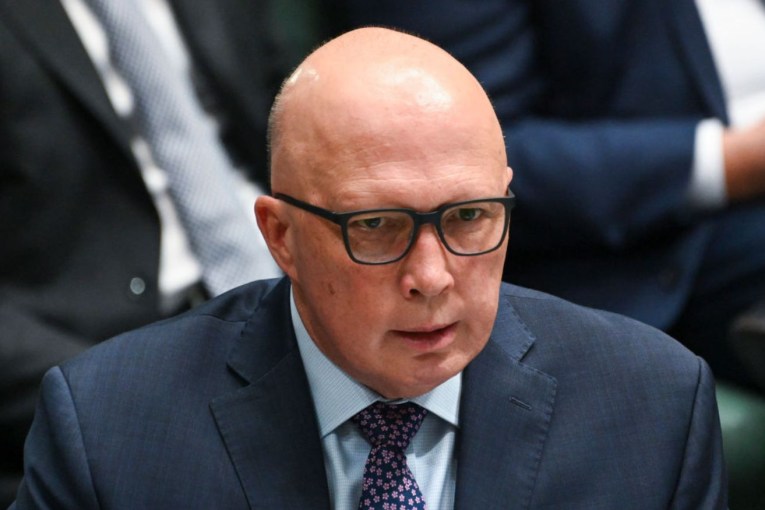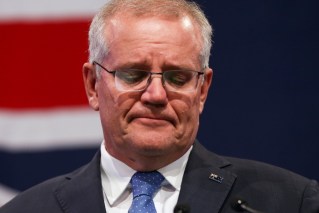Alan Kohler: For failing ‘carbon farms’, money grows on trees

This graph stopped me in my tracks the other day.
July 5 was a big day. As well as being the planet’s hottest day ever, it was when the Bureau of Meteorology put the chance of an El Nino at 70 per cent this year, so it’s going to get worse, soon, and Bloomberg New Energy Finance estimated that it will cost the world US$196 trillion to achieve net zero by 2050.
As you contemplate that trio of troubles, you might want to make yourself even more miserable with a website called the Carbon Integrity Explorer, as I’ve been doing.
It lets you examine in detail the regeneration projects in Australia that are behind the Australian Carbon Credit Units (ACCUs) issued by the Clean Energy Regulator (CER). These native forest regeneration projects are the largest project in the scheme, accounting for around 30 per cent of all ACCUs issued to date.
Buying ACCUs allows companies to offset their carbon emissions to meet emission reduction obligations under the Labor government’s new carbon pricing scheme without reducing their emissions.
I spent an absorbing, increasingly dismal few hours over the weekend clicking on random abatement projects, trying to find any in which the tree cover had materially increased, and is therefore responsible for removing some carbon dioxide from the atmosphere. Most of these projects were registered in 2015-16 but a large proportion of them claim they started in 2010-2012, so plenty of time for trees to have grown.
I found one, and only one, on the Eyre Peninsula in South Australia. It’s called the Arbon-Tooligie Human Induced Regeneration project, and covers 7863 hectares, which is very small. Tree cover has increased, and 148,397 ACCUs have been issued to its promoters, currently worth $29.75 apiece, or a total of about $4.5 million.

Arbon-Tooligie covers 7863 hectares in South Australia. Photo: Greencollar
For every other project I clicked on, the tree cover had either decreased, or the increase was “negligible”. Yet they had all also been issued with ACCUs, hundreds of thousands of them, worth millions of dollars.
A group of academics at Australian National University led by Professor Andrew Macintosh has gone through all the projects on the Carbon Integrity Explorer so you and I don’t have to.
Here are their results:

Source: ANU
To summarise: 27.5 million ACCUs, worth $825 million at today’s spot market price, have been issued for projects where the tree cover has decreased, or the increase has been negligible.
And to qualify as an “increase”, the trend in tree cover only has to be an increase of 0.25 per cent per year, which is hardly going to save the planet.
Two questions arise: First, what happens when the regulator eventually gets around to inspecting the projects to see whether they genuinely reduced atmospheric carbon? And second, what the hell is going on?
As to the first question: The rules require that by the 15th year of the project, 90 per cent of area that has been credited must have regenerated and have forest cover. If the credited area doesn’t have forest cover by then, proponents might have to hand back the ACCUs they have received.
To choose one at random – a 24,806 ha regeneration project near Bourke in New South Wales, which was registered in August 2015 and has produced a healthy crop of 441,526 ACCUs for its promoters, currently worth $13.2 million.
Yet its tree cover has decreased, and its integrity is assessed as “high risk” by the Explorer because most of the credited area has never been comprehensively cleared, its tree cover has gone backwards and the trends in tree cover in the credited areas are worse than those in the area surrounding the property.
They call it ‘carbon farming’
Most of these projects are owned by farmers who have been persuaded by ACCU brokers like the firm called Climate Friendly to supplement their income by regenerating native forests in areas that have never been comprehensively cleared by reducing grazing pressure from livestock or feral animals like goats. They call it carbon farming.
The project’s owner has until 2030 have until 2030 to get forest cover on this project from its current levels, of around 22 per cent, up to 90 per cent, even though it has been essentially static since the project was first registered. If the owner can’t, they might have to hand back their ACCUs.
The owner would be just one of dozens of farming families in a state of extreme “regulatory risk”. The CER doesn’t have to demand the return of ACCUs if the abatement of a project doesn’t measure up, but it can, and the farmers have no way of knowing whether they will.
In any case, the carbon abatement that was supposed to have happened largely doesn’t appear to exist. This means the steel manufacturer (or other emitter) who bought the ACCUs has been allowed to continue to emit but there has been no offsetting reduction in emissions elsewhere.
As for the bigger question of what the hell is going on here, I really have no idea, but I suspect it’s called politics.
Climate Change Minister Chris Bowen happily promotes the government’s emissions reduction credentials but given the amount of offsets that are being doled out for regenerating native forests in the desert that either aren’t regenerating or would have regenerated anyway without the projects, it’s hard to escape the conclusion that the appearance of doing something is a lot more important than actually doing something.
And with an El Nino on the way, a lot of the trees that have been counted up to now will either die when Australia burns or die in the drought we’re about to have.
Cajoling, bullying, paying
Apart from anything else, the CER, and therefore the government, is going to have some tough decisions over the next few years – either demand that drought-stricken farmers spend millions on ACCUs so they can hand them back or let the non-existent abatement stand.
Meanwhile, the government is facing a very awkward shortfall in its emissions reduction target.
The chairman of the new Net Zero Authority, Greg Combet, has the task of making net zero happen by 2050 by cajoling, bullying or paying the companies in the safeguard mechanism to cut their emissions by 4.9 per cent per year, as promised by the Prime Minister.
For airlines, cement and steel manufacturers and other big emitters still waiting for a technology breakthrough to rescue them, it will be all about buying ACCUs to offset their emissions rather than actually reducing them, because they can’t. And of course they’ll be passing on the cost of the ACCUs to their customers.
But what if the offsets don’t offset?
According to Carbon Integrity Explorer, 27.5 million – or about half of the ACCUs issued so far – don’t offset.
This is going to be one of those train crashes that everybody involved can see coming, but they are hiding their eyes, hoping to make it through till tomorrow.
Alan Kohler is founder of Eureka Report and finance presenter on ABC news. He writes twice a week for The New Daily









